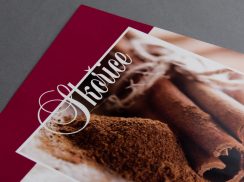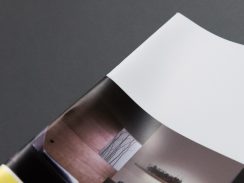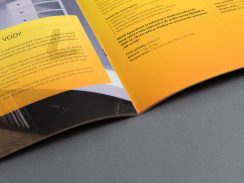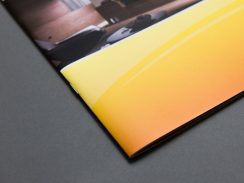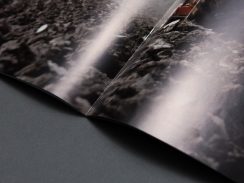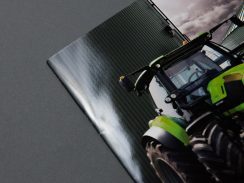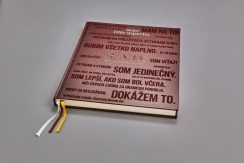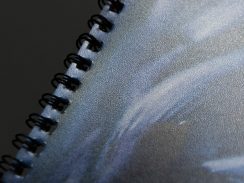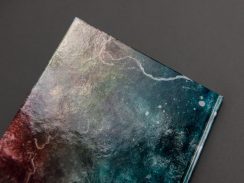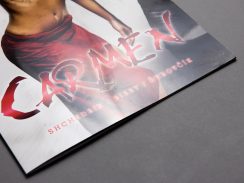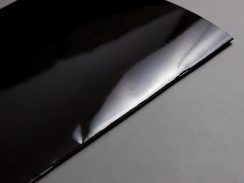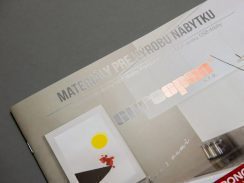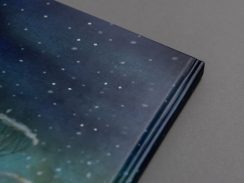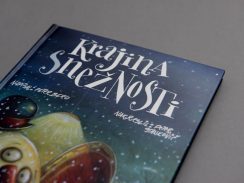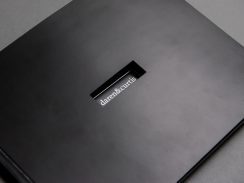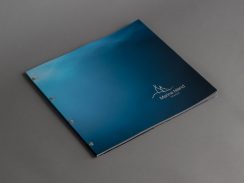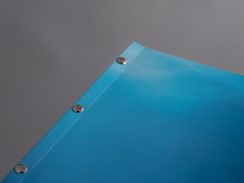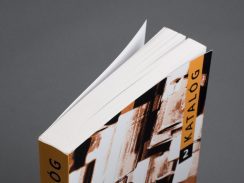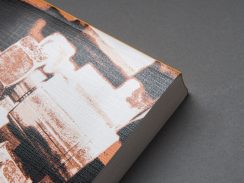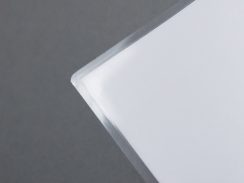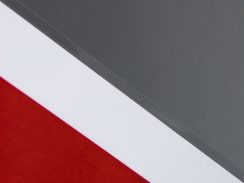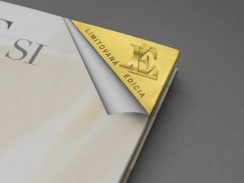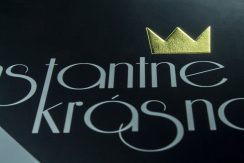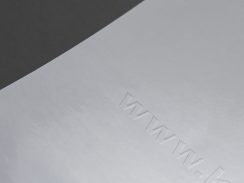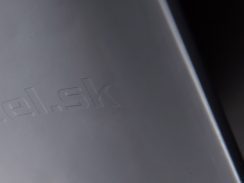Printing varnish
The advantages of printing varnish include ease of application, but a drawback is that it can only be used on printed materials with standard refinements. Printing varnish only achieves a limited degree of resulting gloss. Various types of printing varnishes are used, including gloss, matte, metallic, perfumed and others.
Perfumed printing varnish
Perfumed varnishes are sometimes called fragrant varnishes. Their principle is relatively straightforward. Small micro capsules containing a predefined aroma are mixed into the varnish. These micro capsules combined with the varnish are then applied onto the printing sheet and the varnish dries. The fragrance is then released as the pressure applied by the hands or fingernails break the individual micro capsules. Most applications are limited in scope and not all fragrances can be used, through many standard types are available. If a client requests a custom fragrance, very specific processing is involved and this fact is reflected in the delivery terms and the price.
Dispersion varnish
These varnishes may be specially modified for application in the reservoir of a press or can be applied using a conventional method with a varnishing unit installed behind the press unit on an offset press. They have a different composition compared to printing varnishes and are used on refined materials with a very high standard of quality given their resulting gloss and surface finish. We differentiate between several types, with gloss and matte as the standard types, along with many specific types, including scratch, metallic, blister, perfumed and others.
Full-coverage UV varnish
UV varnishes have a completely different composition compared to printing and dispersion varnishes. They are applied by a varnishing unit, while the individually varnished sheets are then exposed to UV light to instantly harden the layer of varnish. Gloss UV varnish is primarily used for full-coverage applications. It protects the printed material from ink streaking and increases its overall value, especially with respect to the covers of periodicals and catalogues. It serves as a replacement for full-coverage lamination in many cases.
Spot UV varnish
Spot varnish is used as a decorative and design element where only a specific area with a regular or irregular shape is varnished. This varnish is most commonly applied using screen printing and is often applied to a laminated surface.
Hybrid varnishes
These varnishes often serve as a replacement for spot varnishing and are a more economical choice given the method of application and potential combinations with other technologies; they are also used to produce attractive design effects. The most commonly used types are drip-off varnishing and “orange peel” varnishing.
A matte varnish is first applied in an offset unit for effect using an offset press plate that has specific areas reserved for gloss. A full-coverage high gloss dispersion varnish or full-coverage UV varnish is then applied to react with the previously applied matte varnish. This interaction results in eye-catching effects on these reserved areas such as this orange peel effect, depending on the type of varnish and its application.
Gloss lamination
This is the true classic among surface finishes. Its primary purpose is to multiply resistance to mechanical and chemical damage several fold compared to unrefined products. The process involves the application of a layer of gloss foil on the surface of the printed material.
Matte lamination
As opposed to gloss lamination, matte lamination delivers higher strength to printed materials and a higher level of design. This finish is often used in combination with spot varnish to improve the overall value and appearance of the printed material. It is slightly more costly than gloss lamination, but these differences are negligible in small printing runs.
Soft touch lamination
This finish uses a stylish and pleasant to touch foil that is applied to the surface of the printed material. The higher financial costs are compensated for by the significant increase in the value of the material itself for the reader or the end user. This finish is perfect for exclusive periodicals, catalogues, brochures and packaging.
Scratch resistant lamination
This type of lamination meets very demanding strength criteria. This finish is primarily used on printed materials with solid dark covers and on materials used on a regular basis. The use of a scratch resistant foil can also be attractive in terms of design as it can give the underlying material more strength. Again, higher costs compared to standard types of lamination must be considered.
Structured lamination
The outer structure of these foils is similar to varnish with the orange peel effect but is much more resistant and does not reflect light. A structured lamination foil in a grid shape is primarily used on the covers of periodicals, catalogues and books as well as on business cards. The use of this finish is often conditioned by price, but the effect it delivers is typically worth it.
Sleeve lamination
Compared to other types of lamination, sleeve lamination is extraordinarily strong and thick and is used primarily on identification cards, tags, etc. It is economically effective in smaller printing runs.
Heat stamping
This type of refinement is used in different kinds of valuable books but is commonplace in the production of labels and packaging as well. A metal layer is applied onto the surface of the material, while heat and pressure applied to the rear of the foil itself releases the adhesive that attaches and separates a part of the foil in the shape of the motif on the stamping plate. A broad range of colour foils specifically for this type of refinement for printed materials currently exists, but gold foil remains far and away the most common. A significant one-off cost is always the production of the stamping form itself.
Cold stamping
This is an innovative and exclusive metallic printing method. Cold stamping permits the creation of attractive effects through the cold application of metal foils, primarily on packaging, labels and on the covers of magazines and catalogues. This specific type of processing is now offered as an add-on directly in offset presses. The most commonly used systems are FoilStar (Heidelberg) and VinFoil (KBA). This surface finishing method gives the client significant appreciation of their printed material. The advantage of the process itself is that common printing inks and other finishing effects can be applied to the metallic layer during the same operation. It is also commonly used in flexographic printing.
Relief stamping – embossing
This type of stamping is applied without foil and by pressing the actual design into the material. Embossing is performed using a press form without ink or using a stamping form. A range of attractive effects can be achieved, and these are primarily used on book covers and when printing labels and packaging and exclusive catalogues.


